The post Is Vedanta Hindu? appeared first on Integral Yoga® Magazine.
]]>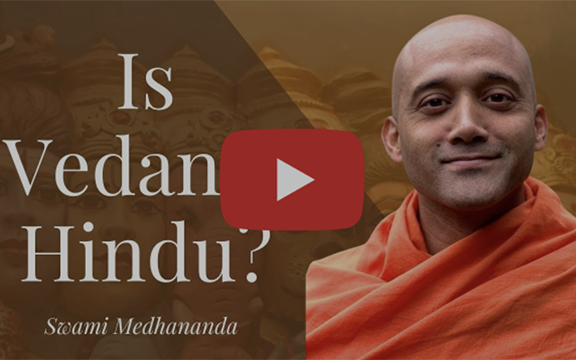 In this talk, Swami Medhananda, a scholar-practitioner, answers the question “Is Vedanta Hindu?” Sri Swamiji explores this thought-provoking subject, examining the historical, philosophical, and spiritual dimensions of Vedanta. Is it exclusively tied to Hinduism, or does it transcend religious boundaries? Discover how Vedanta speaks to seekers of Truth across traditions in this insightful discussion.
In this talk, Swami Medhananda, a scholar-practitioner, answers the question “Is Vedanta Hindu?” Sri Swamiji explores this thought-provoking subject, examining the historical, philosophical, and spiritual dimensions of Vedanta. Is it exclusively tied to Hinduism, or does it transcend religious boundaries? Discover how Vedanta speaks to seekers of Truth across traditions in this insightful discussion.
Swami Medhananda is a monk of the Ramakrishna Order and an academic philosopher, currently serving as Senior Research Fellow in Philosophy at the Vedanta Society of Southern California in Hollywood. He is also the Hindu Chaplain at UCLA and the University of Southern California.
The post Is Vedanta Hindu? appeared first on Integral Yoga® Magazine.
]]>The post Life’s Pendulum: Balance Amid Change appeared first on Integral Yoga® Magazine.
]]>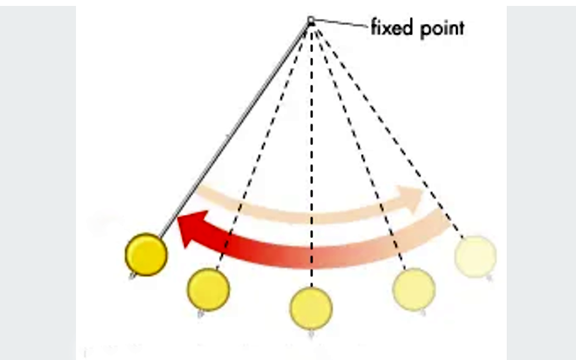
Illustration: Fixed point at top of pendulum during swinging motion.
When you watch the thoughts passing through your mind by being the witness rather than getting caught up in them, is this the same as what is meant by the expression, “Offering it up to God?” Yes, you can look at it in this way. One approach is what we can call the “Jnana Yoga approach” in which you recognize your Self as the witness of all the coming and going. The other approach is the “Bhakti Yoga approach” in which you offer whatever comes and goes to God. Ultimately, they both lead to the same goal of enabling you to remain unaffected by all that changes, all that comes and goes. When we identify with the ever-changing or look for happiness in these things we suffer.
So, in Jnana Yoga, you identify yourself to be a witness and you watch what comes and goes. The other approach is that you offer everything to God rather than taking it as your own. You don’t make it yours. That’s why we hear the prayer, “I am Thine, all is Thine, Thy Will be done.” Then, whether Jnana or Bhakti you are no longer the “doer.” You are the Be-er. That’s why I always say, “Leave it to Be-er.” When things come, you can feel, “I am offering it.” You pass it on, you become a conveyor belt, and that way you remain always balanced
Think of it like the silver screen, a movie screen, on which various images of the movie appear. The images may be those of a war story, a wedding story, or a crime story. Whatever the story is the screen doesn’t get affected, it simply is there, watching the movie. Shadows are cast on the movie screen and then they go away. Life is like this—so many shadows, images, dramas come and go but what remains the same? The witness—the one who is always aware of the coming and going. That is what you call the pure you or the true Self.
You simply know things and even your own thoughts and feelings. You even say, “My thoughts come and go.” How do you know that? “Well, I was all happy yesterday. Today I am a little down and I know I will be all right tomorrow.” See? Because you seem to know the thoughts and feelings are coming and going that means you are the knower, you are not the thoughts. You knew you were happy yesterday and you know that you are unhappy now and you know you will be happy again tomorrow. What is common here? Your knowing. You know you were happy. You know you are unhappy. You know you will feel alright again. So the knowing never became happy and unhappy and the knowing is always the common thing. You are the knower, a pure silver screen. The unhappy thoughts and the happy thoughts of the mind simply cast a shadow on the screen, then roll on. Nothing ever stays there on the screen and just like the movie screen, when you recognize this, you won’t get affected by whatever comes and goes.
And that recognition of who you essentially are as the unchanging Self is the secret to lasting peace and happiness. The real you is never unhappy, sad, anxious, elated, and so on. All those feelings come and go. Who are you, then? You are the true witness, the real knower. That’s why you always say, “I know this, I know that.
When the mind does some mischief, it suffers. But you should not suffer, the real you. As a witness you can say to your mind and body, “I saw you gobbling up everything whether you were hungry or not yesterday. Now you complain, ‘Oh, I have a little stomachache.’ You can say, “Sorry, I am simply watching. I am sure you will be alright tomorrow once your stomach gets settled.” You can be sympathetic and feel compassion for the mind and body and, in this way, you don’t get affected by whatever arises.
This understanding and recognition of your True Nature can also be cultivated during meditation. When you sit to meditate, just watch the mind. Often, the mind doesn’t stay focused but just runs here and there. That’s the best opportunity to watch the show! Watch how thoughts arise, feelings arise, and then they go. You can observe the nature of the mind which is to be constantly moving here and there. As you become more aware of this and focus your mind on your mantra or breath, gradually the thoughts will begin to settle.
You will also be learning to not involve yourself in the thoughts or feelings that arise and that will also help them to quiet down from lack of attention. As you do this more and more in meditation, you can begin to do the same throughout your day so that the thoughts and feelings that once were experienced as disturbing the mind lose their ability to do that. Instead, you will remember more and more that you are the unchanging one. It’s something similar to how a pendulum functions: You remain like the fixed part connected at the top and then you can enjoy the movement of the pendulum as it swings right and left. Life is for enjoyment and the best enjoyment comes to the one who knows how to remain balanced in the midst of the ever-changing.
The post Life’s Pendulum: Balance Amid Change appeared first on Integral Yoga® Magazine.
]]>The post VedantaWorks: The Teachings of Swami Vivekananda appeared first on Integral Yoga® Magazine.
]]>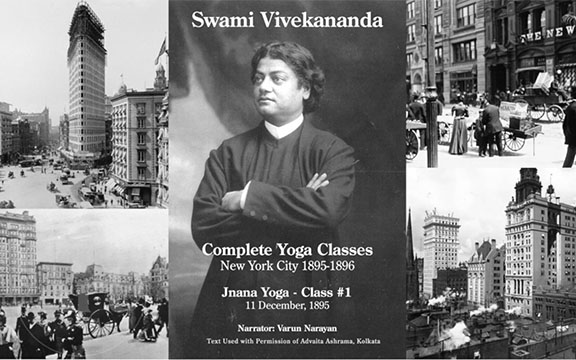 VedantaWorks recently released their third podcast series: The Raja Yoga classes of Swami Vivekananda. VedantaWorks is dedicated to the teachings of Vedanta, the basic philosophy of Hinduism as expressed through Swami Vivekananda. Swami Vivekananda (1863-1902) was an Indian Hindu monk, philosopher, author, religious teacher, and the chief disciple of the Indian mystic Ramakrishna. He was a key figure in the introduction of Vedanta and Yoga to the Western world and is credited with raising interfaith awareness, and bringing Hinduism to the status of a major world religion. Vivekananda became a popular figure after the 1893 Parliament of Religions in Chicago. After great success at the Parliament, in the subsequent years, Vivekananda delivered hundreds of lectures across the United States, England and Europe, disseminating the core tenets of Hindu philosophy.
VedantaWorks recently released their third podcast series: The Raja Yoga classes of Swami Vivekananda. VedantaWorks is dedicated to the teachings of Vedanta, the basic philosophy of Hinduism as expressed through Swami Vivekananda. Swami Vivekananda (1863-1902) was an Indian Hindu monk, philosopher, author, religious teacher, and the chief disciple of the Indian mystic Ramakrishna. He was a key figure in the introduction of Vedanta and Yoga to the Western world and is credited with raising interfaith awareness, and bringing Hinduism to the status of a major world religion. Vivekananda became a popular figure after the 1893 Parliament of Religions in Chicago. After great success at the Parliament, in the subsequent years, Vivekananda delivered hundreds of lectures across the United States, England and Europe, disseminating the core tenets of Hindu philosophy.
Over the last two years, VedantaWorks has produced podcasts of Swami Vivekananda’s Jnana Yoga and Bhakti Yoga classes given in New York City in 1895-1896. Their podcasts are available at no cost on all major platforms, including YouTube.
Available as Podcasts: The complete Jnana Yoga and Bhakti Yoga classes of Swami Vivekananda given in New York City in 1895-96, are now available as podcasts in chronological order. Narrated by Varun Narayan. with kind permission by the publisher Advaita Ashrama.
Swami Vivekananda: Jnana Yoga on Google Podcasts
Swami Vivekananda: Jnana Yoga on Amazon Podcasts
Swami Vivekananda: Jnana Yoga on Apple Podcasts
Swami Vivekananda: Jnana Yoga | Podcast on Spotify
Swami Vivekananda: Jnana Yoga on Youtube
Swami Vivekananda: Bhakti Yoga on Google Podcasts
Swami Vivekananda: Bhakti Yoga on Amazon Podcasts
Swami Vivekananda: Bhakti Yoga on Apple Podcasts
Swami Vivekananda: Bhakti Yoga on Spotify
Swami Vivekananda: Bhakti Yoga on YouTube
The post VedantaWorks: The Teachings of Swami Vivekananda appeared first on Integral Yoga® Magazine.
]]>The post The Way of Recognition appeared first on Integral Yoga® Magazine.
]]>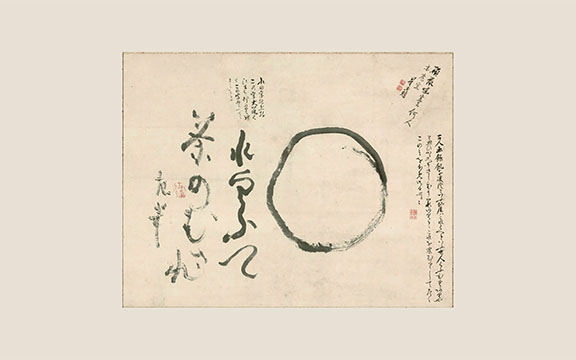
Japanese calligraphy (Shodo): Ensō by Zen Master Sengai Gibon (1750–1837).
Understanding Enlightenment and Awakening
For many, the terms enlightenment and awakening evoke the promise of extraordinary experiences. Referring to a concept that has intrigued and captivated truth seekers throughout history, these terms are often associated with exotic Eastern cultures. As such, they are frequently misunderstood.
In this brief article, toward shedding light on the essence of these terms and dispelling misconceptions, we will explore just what is enlightenment. And we will examine the true meaning of awakening.
Even before The Beatles famously made their way to study Transcendental Meditation in Rishikesh, people have been venturing consistently to the East, drawn by the allure and liberation of spiritual enlightenment. Hence, we have come to believe that extraordinary and exotic environments – cultures such as India, Japan, China, Thailand and Tibet – hold the key to awakening. But such beliefs are founded on an innocent misunderstanding. For, in fact, when we seek to answer the question ‘What is enlightenment?’, we find that what we are referring to is not an experience at all.
The Way of Recognition
Enlightenment is what might be termed the ‘way of recognition.’ Recognition meaning ‘to know again something we have always known but overlooked, ignored or forgotten.’ So, what is it we have overlooked as we’ve pursued our awakening? It is our essential Self, the very core of who we are.
The essential nature of anything is the aspect that cannot be removed or separated from it. When everything removable is stripped away, what remains is our essential Self. Our essential Self, who we truly are, then, must be that which has always been, and forever remains when everything else comes and goes. What is it that comes and goes? All of our thoughts, feelings, sensations, perceptions, activities, etc. – the entire ever-changing content of our experience. All the components of the content are temporary appearances within that which forever remains – our essential being, who we truly are.
Concealing the Knowing of Our Being
For most of us, most of the time, however, the content of experience overshadows our knowing of our essential being. The content becomes the focal point, consuming our attention. Consequently, we forget or overlook the simple fact of being, which lies eternally behind and permeates all experience without exception.
The way of recognition is an approach in which we mentally set aside everything that is not essential to us – thoughts, feelings, activities, etc. Just as we undress before going to bed, discarding layers of clothing, we must mentally shed the ‘clothing of experience’ in order to uncover our essential Self.
Awakening is not a process of becoming something new, it is a return to our permanent, essential being, the presence of awareness in which the entire content of our experience continually appears, lingers and transforms, and ultimately dissolves.
As our essential being becomes divested of the qualities acquired from the content of experience, our thoughts lose their agitation, and our afflictive emotions no longer create a sense of lack.
We come to know the innate peace and joy that pre-exist content. We discover that, rather than dependent on external circumstances, causeless peace and joy are the inherent nature of our being, ‘the peace that passeth understanding.’
A New Habit of Returning to The Essential Self
We may, through various means, routinely trace our way back to our essential Self. But inevitably, through force of habit, we tend to find simply being once again eclipsed by the captivating content of experience.
This stark reality should strongly encourage us to consider that enlightenment is not something to be pursued as a one-time event. In fact, there is no pursuit at all, because there is no path to enlightenment. Rather, we would do well to create a new habit of intentionally shifting our focus from the content of experience to the essence of being.
We’re likely to find, then, that each time we embark on the way of recognition, the power of our experiences to take us away from ourselves diminishes. Gradually, without no path involved, we establish ourselves in simply being, in our true nature.
Over time, divested of the qualities acquired from our experiences, we feel that our being extends far beyond our personal self, that our being is not really our being as a person.
And we sense that the same reality we are on the inside is shared by all people, animals, and things. This recognition gives birth to love in relation to people and animals and an appreciation of beauty in objects and nature. Our being becomes intimate, yet impersonal and unlimited.
Continual Rediscovery of The True Self
To sum up, enlightenment and awakening are not extraordinary or elusive experiences; they are the recognition of our essential nature. A profound shift from our focus on the content of experience to our underlying being.
The answer, then, to the question, ‘What is enlightenment?’, can be found, not in an activity, but in the here and now. It can be found in the way of recognition – a continual uncovering and rediscovering of our true Self and a peace and joy that transcend all circumstances.
~This article, used with kind permission of Rupert Spira, is based on the transcript from this video on Rupert Spira’s YouTube channel.
The post The Way of Recognition appeared first on Integral Yoga® Magazine.
]]>The post The Ego is Like a Powerful Elephant appeared first on Integral Yoga® Magazine.
]]>
Photo: Sri Ramana (seated, center) with devotees, Thiruvanamalai, India, 1930s.
A dialogue between Sri Ramana Maharshi and a disciple, as recounted in Maharshi’s Gospel: The Teachings of Sri Ramana Maharshi, 1939.
Devotee: How is the Guru found?
Maharshi: God, who is immanent manifests, through Grace, according to the devotee’s development. The devotee thinks that the Guru is a person and expects a relationship, as between two physical bodies. But the Guru, who is God or the Self incarnate, works from within, helps the person to see the error of their ways and guides them in the right path until they realise the Self within.
Devotee: What should the devotee do then?
Maharshi: They have only to act up to the words of the Master and work within. The Master is both ‘within’ and ‘without,’ so they create conditions to drive you inward and at the same time prepare the ‘’interior’ to drag you to the Centre. Thus the Guru gives a push from ‘without’ and exerts a pull from ‘within’ so that you may be fixed at the Centre. You think that the world can be conquered by your own efforts. When you are frustrated externally and are driven inwards, you feel ‘Oh! there is a Power higher than man!’
The ego is like a very powerful elephant which cannot be brought under control by anything less powerful than a lion, which, in this instance, is no other than the Guru, whose very look makes the elephant-like ego tremble and die. You will know in due course that your glory lies where you cease to exist. In order to gain that state, you should surrender yourself. Then, the Master sees that you are in a fit state to receive guidance, and guides you.
Devotee: But can the devotee obtain happiness?
Maharshi: The devotee surrenders and it means that there is no vestige of individuality [no sense of duality, of a self or ego that is separate from eternal Being] retained by them. If the surrender is complete, all sense of [separate] self is lost, and then there can be no misery or sorrow. The eternal Being is nothing but happiness. That comes as a revelation.
The post The Ego is Like a Powerful Elephant appeared first on Integral Yoga® Magazine.
]]>The post The Path to Spiritual Awakening appeared first on Integral Yoga® Magazine.
]]>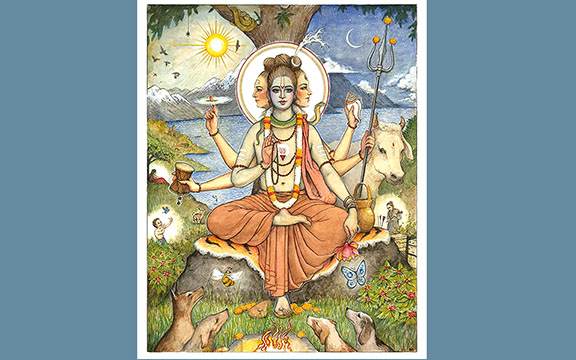
Sri Dattatreya with his 24 Gurus. Artwork by Erik Jacobsen.
The Cosmic Guru is the only Guru. All the rest is just comic. The real Guru is everywhere. Within, without. The Guru is above all the qualities, at the same time you see every kind of quality there. Sometimes the Guru is all sattvic, sometimes very rajasic, sometimes totally tamasic, sometimes, none of these things. It is something indefinable. Guru is the one who removes your darkness of doubt, the darkness of ignorance about who you are, and ultimately tells you how to experience that Guru within and see the same Guru everywhere.
In the Hindu system, Sri Dattatreya is considered Brahma, Vishnu, and Rudra put together. He, himself, says that he had 24 Gurus, including various aspects of nature. One of his Gurus was a fisherman. Another one was a mother, in a countryside, who was pounding the grain into powder. They didn’t come to teach him. But he treated them as the Guru. It’s you who make the Guru. Nobody makes oneself a Guru. So it is the student that makes a teacher. Not the other way around. And if you want to learn you can learn from anything and everything.
There is a story that the fisherman was sitting on the bridge with his line cast in the water, his eyes fixed to the little float. There was a huge procession, with all of the band, music, dancing, and animals—horses, camels, elephants. It was a mile long procession that was going over the bridge. After the procession was gone, Dattatreya approached the fisherman and asked, “Wasn’t that a fantastic procession?” And there too, he had to go and shake his shoulder, get his attention to ask that question.
The fisherman replied, “I don’t know anything.”
“But, did you hear any sound, the drum?”
“Was there a drum? Where was it?”
“So then what were you doing sitting here?”
“Well, you know, I’m trying to catch a fish. All my attention was on that float. I didn’t hear anything, I didn’t see anything until you came and shook my shoulder and drew my attention.” Dattatreya immediately fell at his feet and said, “You are my teacher. I wish I learned this kind of concentration in my day‑to‑day activities when I want to do something. The whole royal procession didn’t attract you, because your eye was on a teeny little float to catch a little fish. And I am here trying to catch a big fish (God or Cosmic Consciousness). People say it’s in the heaven. Some say it’s everywhere. Some say it has form. Some say it has no form, and so on. And I’m trying to catch that. How much of a great, big concentration I should have to catch that big fish. I wish I am you.”
See, here, the fisherman didn’t even know any scripture. He didn’t know Bhagavad Gita, Bible, Koran, Torah, no. He was totally illiterate. If we can learn something useful, something practical for our spiritual growth from somebody or from something, then that becomes your Guru. So a Cosmic Guru means everything in the cosmos is the Guru. We can learn from anything and everything if we want to learn.
Sincere studentship is the most important. Mumukshutva, is the final qualification in Sadhana Chatushtaya, the fourfold means of spiritual attainment, in Advaita Vedanta. It is the intense longing, the burning desire for liberation, freedom and Self-realization. Who is the one who will be very keen in learning how to get released from all this turmoil, all this suffering? The one who got bound everywhere. Otherwise, why should they even be looking for liberation? We try to use our little, finite intelligence, try to understand, grasping after things, to make our lives happy. And then, ultimately, when we realize that acquired things seem to be fleeting and temporary we begin the true spiritual seeking.
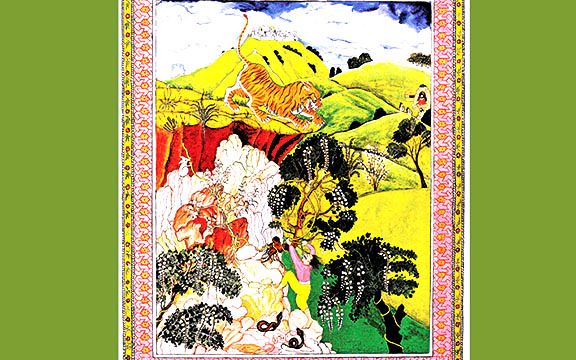
Artwork by Uma Schreiber from Enlightening Tales by Swami Satchidananda.
Once a fellow was hiking through a jungle. He was really tired and he couldn’t even walk anymore. When he saw a big tree with a nice shade he thought, “Ahh, let me just sit down here and rest a little.” As he was sitting he heard a big sound, the roar of a tiger. He looked and he saw a ferocious tiger coming towards him. He ran. From nowhere he got all the energy, when a few minutes before he couldn’t even walk one more step. All of a sudden he seemed to have gotten all the energy. That’s what you call kundalini. It is all stored in the body and when the real need comes it will pop up.
So he was really running fast, trying to escape from the tiger. In that pursuit all of a sudden he fell into an old deep well. It was covered with bush and creepers so he didn’t see it. But luckily before he reached the bottom, he was able to hold onto some vines and he was hanging there. The vines were strong and he was able to climb up, but when he looked up he saw that ferocious tiger still looking at him so he couldn’t go up. He held on but very soon he felt tired. He thought, “Why not I slowly slide down to the bottom.” As he looked down he heard a lot of hissing sound. He closely looked and he saw a few cobras that were there. He couldn’t go up or down. He was still holding there, clinging to his life.
At that moment he heard a little gnawing sound, “Krit, krit, krit, krit.” He listened to try and find where the sound was coming from and saw that the very vine he was clinging to was being gnawed by a rat. Any moment the vine will be cut. At that point he looked up, “God, what am I to do?” When he opened his mouth to say, “God,” he felt something dropping on his lip. When he had fallen, he had disturbed a honeycomb and the honey was dripping from the comb and one drop fell on his lip and he said, “Ahh, I never tasted honey before or after like that until my wedding day. That was a nice wedding. My wife is my true love.” He forgot the entire situation he was in. He was remembering his wedding feast.
The happiness that we find in the world is like that. All our senses are ready to gobble us up like the tigers and the cobras. And our life is really dangling on the vine, every day being cut by the rat. Day by day, as you another sheet of the calendar, you are cutting the life thread. Any cut, any bite, would be the last cut.
When we realize this, we will see that the world is there to teach us this truth. Life is a continuous learning process. And we go through all kinds of experiences. Ultimately we come to the understanding that, nothing and nobody is going to make me happy or peaceful. Ultimately you realize that we don’t find our peace and fulfilment from the outside. It is in us, as our true, essential nature. Even that running after God from outside should cease. Our effort in going and reaching should cease. Then, you stop running. The simple word for that is contentment.
The post The Path to Spiritual Awakening appeared first on Integral Yoga® Magazine.
]]>The post Advaita Vedanta and the Teachings of Sri Ramana Maharshi appeared first on Integral Yoga® Magazine.
]]>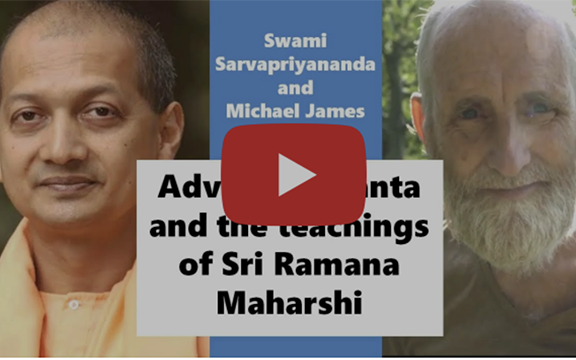 This video features special guests Swami Sarvapriyananda (spiritual director, Vedanta Society of New York) and Michael James (a translator of Sri Ramana Tamil writings) as they discuss the essence of Advaita Vedanta and Sri Ramana’s teachings. They also focus on how to put these teachings into practice and they answer questions submitted by the audience. Their discussion brought deep insights about the true core of Advaita and the practice Sri Ramana gave to eliminate the egoic self, which seems to exist if not investigated.
This video features special guests Swami Sarvapriyananda (spiritual director, Vedanta Society of New York) and Michael James (a translator of Sri Ramana Tamil writings) as they discuss the essence of Advaita Vedanta and Sri Ramana’s teachings. They also focus on how to put these teachings into practice and they answer questions submitted by the audience. Their discussion brought deep insights about the true core of Advaita and the practice Sri Ramana gave to eliminate the egoic self, which seems to exist if not investigated.
The post Advaita Vedanta and the Teachings of Sri Ramana Maharshi appeared first on Integral Yoga® Magazine.
]]>The post Jnana Yoga’s Fourfold Sadhana appeared first on Integral Yoga® Magazine.
]]>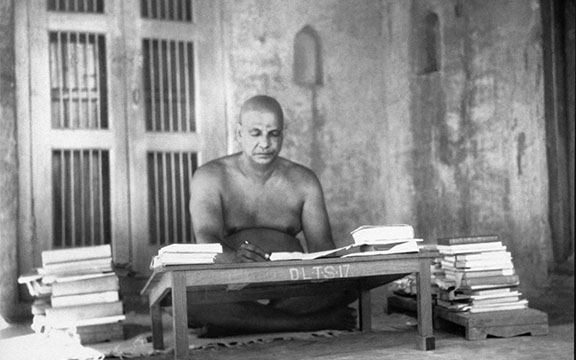
Photo: Sri Swami Sivananda was prolific in writing books on Yoga; 1950s.
The Fourfold Sadhana of Jnana Yoga consists of viveka, vairagya, shadshampat or sixfold virtues and mumukshutva or strong yearning for liberation. Viveka dawns in one who, through the grace of God, has done virtuous actions in their previous births as offerings unto God without expectation of fruits and without egoism. Viveka is the discrimination between the real and the unreal, the permanent and the non-permanent, Atman and Anatma.
You must first develop Viveka or discrimination between the real and the unreal and Vairagya or dispassion for the enjoyment of objects herein and hereafter. Then only you will have success in the practice of sama. Vairagya born of viveka only will be of a lasting nature.
Sama is serenity of mind produced by the constant eradication of vasanas or desires. Whenever desires crop up in your mind do not try to fulfill them. Reject them through discrimination, right inquiry and dispassion. You will get tranquility of mind and mental strength by constant practice. The mind is thinned out. The mind is checked directly from wandering; its out-going tendencies are curbed. The mind is detached from the manifold sense objects by continually observing their defects and is fixed on Brahman. In the practice of sama, the five jnana-indriyas or organs of knowledge, viz., ear, skin, eye, tongue and nose are also controlled.
Dama is the control of the external organs, i.e., the organs of action or the five karma-indriyas, viz., organ of speech, hands, feet, genitals and the anus and the external instruments, the organs are withdrawn and fixed in their respective centres.
The eyes run outside to see a beautiful object. If you at once withdraw the eyes from that object, it is called dama. You should restrain the other Indriyas also by the practice of dama. Some say, practice of dama is not necessary. It is included in sama. The indriyas cannot work independently. They can work only in conjunction with the mind. If the mind is checked, the indriyas will come under control automatically.
The mind will come under control very easily if dama also is practised. It is a double attack on the enemy from within and without. One is crushed or subdued soon. If the front and back doors are closed simultaneously, the enemy is caught quite readily. There is no escape for them on any side.
By practice of dama you do not allow either the indriyas or the mind to come in contact with the objects. You do not allow the mind to come through the external instrument, viz., the eye, to assume the form of the object. In neophytes the mind never remains self-centred despite rigorous practice of sama. It tries to run outside towards external objects. If dama is also practised, it will be of immense help to curb the mind efficiently. If you tie the hands of a mischievous boy, he tries to do mischief with the feet. If his feet, also are tied he keeps quiet. Sama corresponds to the tying of the hands and dama to the tying of the feet. Therefore the practice of dama is also necessary.
Dama is a practice of a student of Jnana Yoga. Pratyahara corresponds to the practice of dama. Pratyahara is the practice of a Raja Yogi. In the former it follows the practice of sama; in the latter it follows the practice of pranayama. In the former the indriyas are withdrawn by calming or restraining the mind; in the latter the indriyas are withdrawn by restraining the prana. The Indriyas can be withdrawn more effectively by the process of double withdrawal, by withdrawing the mind and the prana at the same time. It is the mind that moves the indriyas. It is the prana that vivifies or energises or galvanises the indriyas. Sama and dama are strictly speaking Raja Yogic practices.
Now we come to the practice of uparati. Some define uparati as renunciation of all works and taking up Sannyasa. Uparati follows the practice of sama and dama. Uparati is self-withdrawal. It consists in the mind-function ceasing to act by means of external objects. Uparati is extreme abstention. It is the turning of the mind from the objects of enjoyment.
The mind of the student who is established in uparati will never be agitated even a bit when they see a beautiful object. There will be no attraction. When they look at delicious fruits or palatable dishes, they will not be tempted. They will have no craving for any particular object or dish. They will be satisfied with anything that is placed before them. This is due to the strength of mind he has developed by the practice of viveka, vairagya, sama and dama.
Further the mind is experiencing a wonderful calmness and transcendental spiritual bliss by the above practices. It does not want these little, illusory pleasures. You can wean the mind from the object to which it is attached by training it to taste a superior kind of bliss. If you give cotton-seed extract to a bull or a cow, it will not run towards dry grass or hay. Mind is like the bull.
Those who practise brahmacharya must be fully conversant with the technique of sama, dama and uparati. Then only they will be established in the practice of celibacy.
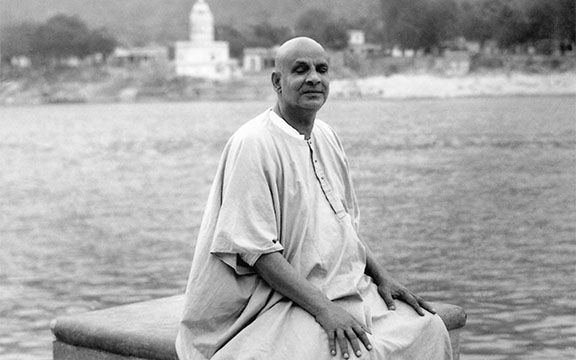
Photo: Sri Swami Sivananda meditating on the banks of the Ganges.
Titiksha is the power of endurance. A titikshu is able to bear pain, insult, heat and cold. They do not care to redress them. They are free from anxiety.
Sraddha is unshakable faith in the existence of Brahman, in the teachings of Guru and scriptures, and faith in one’s own Self. If anyone possesses these qualifications they will get samadhana or one-pointedness of mind and burning desire for liberation. The mind will move naturally towards the inner Self always. The student should now approach a Brahma-Srotri, Brahmanishtha Guru, hear the Srutis, reflect and meditate on the significance of the Tat Tvam Asi Mahavakya constantly. They will attain Self-realisation or Atma-Sakshatkara.
If you have viveka, vairagya will come by itself. If you possess viveka and vairagya, sama will dawn by itself. If you are endowed with viveka, vairagya and sama, dama will come by itself. If you have sama and dama, uparati will come by itself. If you have all these qualifications, titiksha, sraddha and samadhana or one-pointedness will come by themselves. If you possess viveka, vairagya, sama, dama, uparati, sraddha and samadhana, mumukshutva or burning desire for liberation will manifest by itself.
Even in a Jivanmukta or a liberated sage the eyes will move towards the objects through the force of habit. But they can withdraw them completely and make them mere empty sockets if they will. They see the whole world within themselves. There are no evil thoughts in their mind. This is the difference between the vision of a Jnani and a worldly person.
Some students ask: “Shall we practise viveka, vairagya, etc., in order, one by one, after mastering each anga or shall we practise all the angas simultaneously? If we practise one by one, perhaps we will not be able to get mastery over one or two angas in this life. We may require several births for perfect mastery over all angas. Life is very short. What shall we do?” It depends upon the temperament, taste and capacity of the students. Some like to get perfect mastery over each stage and then proceed to the next step. Some like to practise all the limbs at the same time. For six months concentrate your mind in cultivating viveka, vairagya and sama. For the next six months try to acquire sraddha, samadhana and mumukshutva. Devote more time in developing that virtue which you are seriously lacking. If you are earnest and sincere in your attempt, you can develop the four means and attain Self-realisation in this very birth.
Another Vedantic student says, “Swamiji, there is no necessity for acquiring these four means of salvation, viveka, vairagya, etc. It is a long, tedious process. I will not be able to acquire them even in several births. The shortest way is to think of Brahman always. I will acquire all the virtues automatically. Then I will be able to practise deep meditation.” He is right. A first class type of student can adopt this method because he had cultivated the four means in his previous births. A mediocre student will not be able to think of Brahman at the very outset. How can one think of Brahman when the mind is filled with impurities, when the mind is turbulent and the indriyas are jumping and revolting? Absolutely impossible. He may sit for thinking on the Self. He will be building castles in the air and will be thinking of other objects. He will foolishly imagine that he entered into Nirvikalpa Samadhi. He will mistake deep sleep for Samadhi. Many are deluded in this manner. They do not have any spiritual progress. They can have no idea of Brahman. It is only the mind that is rendered pure by the practice of viveka, vairagya, sama, dama, etc., that can have definite conception of Brahman. Ideas of Brahman cannot be lodged in a restless, impure mind.
May you all live drowned in the ocean of Brahmic Bliss in an illumined state through the practice of viveka, vairagya, sama, dama, uparati, titiksha, sraddha and samadhana!
~Excerpted from Fourfold Sadhana by Sri Swami Sivananda
The post Jnana Yoga’s Fourfold Sadhana appeared first on Integral Yoga® Magazine.
]]>The post Who is the Sufferer? appeared first on Integral Yoga® Magazine.
]]>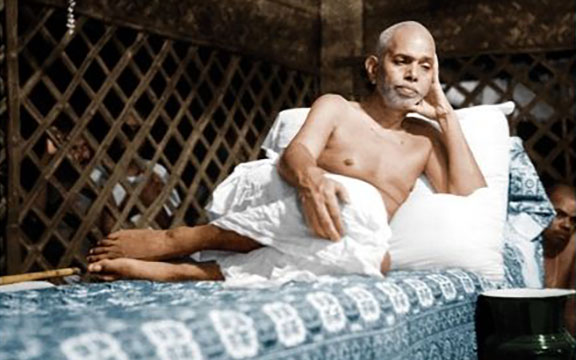
Photo: Sri Ramana Maharshi
I know it sounds hard, but we must remember that when we go through, or see, suffering it is not the Immortal Self that suffers. Who is the sufferer then? It is the mind that goes through all the changes—the little ego, guided by vasanas, wrong thinking, and conditioning that tries to veil the real Self.
It is difficult, but let us remember that it is not our essence—our true identity—that undergoes anguish and pain. Even realized beings (jivanmuktas) will have to live out their bodily karma until they are liberated from the body. That is why we have seen great saints like Sri Ramakrishna and Sri Ramana Maharshi going through illnesses like cancer.
Often I am asked, “Why should such great souls have such horrid diseases? They even appear to have suffered.” The answer is that as the Self, they never had cancer. Their bodies were diseased, their minds experienced profound pain, and yet they themselves were watching—identified not with the body or mind, but with the Self. I saw it myself when I had the great privilege to be with Bhagavan Ramana Maharshi before he left his body. I could barely stand the sight of what his body was going through, yet he smiled and teased me and the others as if we were fools. “What kind of Yoga is this, eh?” he would ask. “Why do you worry so? This body is just undergoing its karma.”
Some of Sri Ramana’s devotees pleaded with him to heal his body. They went to him, crying and asking, “Bhagavan, we have seen you heal others, can’t you please put your hand on your own body and heal this cancer, at least for our sake? Just touch the affected portion of the body, please Bhagavan, you will get healed.” He gazed at them with compassion, knowing that their great devotion to him prompted these pleas. Then, he gently replied, Who is the one there who should heal it?” The devotees were silent. They again were reminded that Bhagavan didn’t identify with the body-mind; there was no longer any “doer” to do anything since that seeming separate self had dissolved long before. Bhagavan was established in his true identity (the Self) and was imparting atma jnana (the wisdom of the Self) to them even during this dire situation.
Bhagavan continually abided in that awareness. Occasionally he would cry out in pain and then he would smile, “Ah, the poor mind can’t bear it. Poor mind, poor body, it seems to you a heavy burden, eh?” He even underwent a cancer operation without any sedatives—a cancer operation! The doctors said it would be impossible without anesthesia. But Bhagavan steadfastly refused. “No. Just do it.” As they were removing the cancer he commented, “Poor arm, tsk, tsk, tsk . . . I told them not to operate on you but they insisted. Okay. So now you must be strong and accept it.” He spoke with profound compassion, as if he were consoling somebody else. And really he was talking to his own body, telling this to his own mind. Because he knew that before the cancer, during the cancer, and after the cancer he would still be the Self. He had attained this God-conscious state and he rested in that peace. That is the true freedom from any and all suffering.
For myself, I could no longer stand the sight of it. I wept and told him so; I told him that I wanted to go. A short time before he left the body, I took leave of him. And he understood; he just nodded his head. I went straight to Rishikesh and the day I arrived the radio brought the news that Sri Ramana Maharshi had left the body.
Sri Ramana witnessed the mental and physical feelings, resting secure in the knowledge that everything in this world must pass away. Through atma jnana which is cultivated by detachment and the constant questioning of “Who am I?,” we can realize this God-conscious state too. It is our own true, essential, and abiding nature.
Ask yourself continually: Who is the one having this hunger? Who is this who is feeling thirsty? Who is this who feels unhappy? Am I always this way? No? I seem to go through these moods, thoughts, feelings, wants. I experience them. They come and go, yet “I” remain. So, I am not the changing phenomena but rather the unchanging Self. This process of questioning and the letting go of every bit of identification with the ever-changing is a path toward realizing the true Self.
The post Who is the Sufferer? appeared first on Integral Yoga® Magazine.
]]>The post The Freedom of Being Nobody appeared first on Integral Yoga® Magazine.
]]>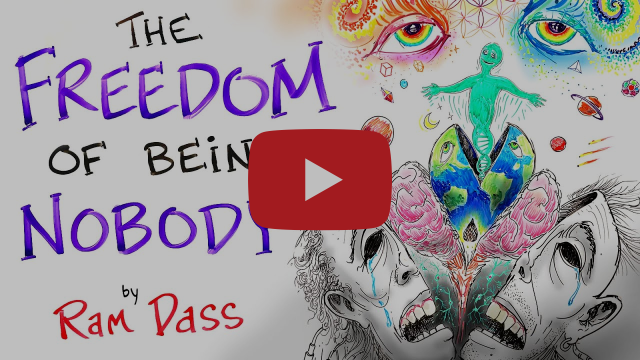 In this inspiring video, Ram Dass speaks about “The Freedom of Being Nobody.” After Skool is a YouTube channel with the goal of empowering the individual and delivering profound ideas through art. In this video, After Skool animates the words and wisdom as Ram Dass addresses the great inquiry: “Who am I?” A profound journey—through these images and words—from the gross and subtle body layers of who we think we are to the revelation of who we actually are in essence.
In this inspiring video, Ram Dass speaks about “The Freedom of Being Nobody.” After Skool is a YouTube channel with the goal of empowering the individual and delivering profound ideas through art. In this video, After Skool animates the words and wisdom as Ram Dass addresses the great inquiry: “Who am I?” A profound journey—through these images and words—from the gross and subtle body layers of who we think we are to the revelation of who we actually are in essence.
The post The Freedom of Being Nobody appeared first on Integral Yoga® Magazine.
]]>The post Only Consciousness appeared first on Integral Yoga® Magazine.
]]>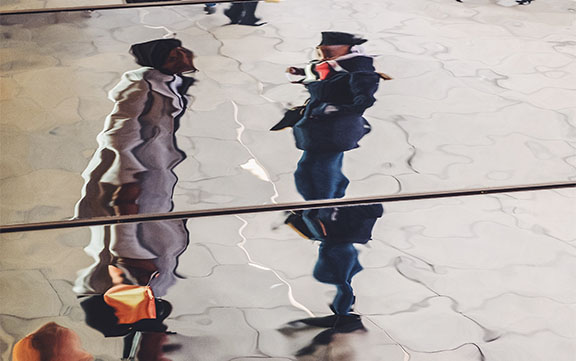
Photo by James Kemp on Unsplash
The question that scientists ask is how matter becomes conscious. The new idea is that everything has a “degree” of Consciousness. It’s called panpsychism. The conclusion of this way of thinking is that the universe is conscious. And this is considered to be equivalent to the non-dual understanding. But it is not. It’s a misunderstanding. It is a form of materialism. The mistake is right at the very beginning… The mistake is the idea “I, the body, am aware.” Once you start there, you’re building your house on sand. Everything you think after that initial thought is going to contain the original mistake within it.
If we think the body is conscious, then we’re going to think that dogs are conscious, cats are conscious, chickens, fish, plants etc., and eventually we’ll think the universe is conscious. The universe is not conscious. Dogs, cats and human beings are not conscious, and never will be. Only Consciousness is conscious. Only Awareness is aware.
So it is not the body that is aware. The body is not the subject of experience, but the object. It’s not the perceiver, it is perceived. It’s not the knower, it is known. That is a fact of experience.
We hear things like, “Everything is pervaded by Awareness.” A statement like that is a concession to the mind that believes in a multiplicity and diversity of things. As a concession to that belief, we can say that all those things are pervaded by Consciousness. But there are no things to be pervaded by Consciousness. No one would ever say that the landscape in the movie is pervaded by the screen. There is no such thing as a landscape to be pervaded by the screen. There is just the screen which is modulating itself as the landscape. So the universe is not conscious and it is not pervaded by Consciousness. There is just Consciousness, which appears to Itself as the universe.
About the Author:
The post Only Consciousness appeared first on Integral Yoga® Magazine.
]]>The post Meditation: Ananda, the Peace That Passeth All Understanding appeared first on Integral Yoga® Magazine.
]]>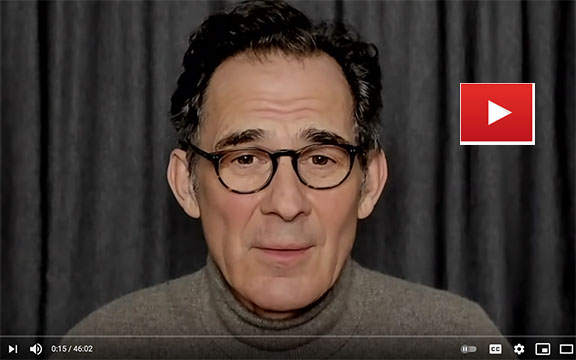 In this inspiring meditation, Rupert Spira (teacher of the “direct path,” a method of spiritual self-inquiry) uses the analogy of a person watching a movie in a cinema to explore the imperturbable nature of awareness. The peaceful presence of awareness, as if watching from a premium seat in the back row, has a view of the person watching and of the movie, and is not affected in any way by the content of the movie or its effect on the audience.
In this inspiring meditation, Rupert Spira (teacher of the “direct path,” a method of spiritual self-inquiry) uses the analogy of a person watching a movie in a cinema to explore the imperturbable nature of awareness. The peaceful presence of awareness, as if watching from a premium seat in the back row, has a view of the person watching and of the movie, and is not affected in any way by the content of the movie or its effect on the audience.
The post Meditation: Ananda, the Peace That Passeth All Understanding appeared first on Integral Yoga® Magazine.
]]>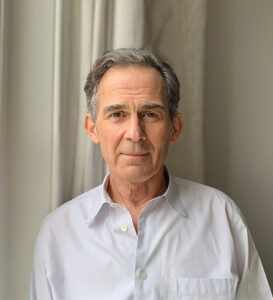 Rupert Spira came across the poetry of Rumi at the age of fifteen, in 1975, and soon after this met his first teacher, Dr. Francis Roles, at Colet House in London. Dr. Roles was himself a student of Shantananda Saraswati, the Shankaracharya of the North of India. Under his guidance Rupert learnt mantra meditation and was introduced to the classical system of Advaita, or non-duality, which formed the foundation of his interest and practice for the next twenty-five years. Throughout these years Rupert also studied the teachings of Ramana Maharshi and Sri Nisargadatta Maharaj on a continuous basis.In the mid-1990s Rupert met Francis Lucille and over the next twelve years Rupert spent all the spare time that work and family commitments would allow with Francis, exploring the sense of separation as it appears in the mind in the form of beliefs and, more important, how it appears in the body as feelings of being located and limited. Francis also introduced Rupert to the Direct Path teachings of Atmananda Krishna Menon and the Tantric approach of Kashmir Shaivism, which he had received from his teacher, Jean Klein.
Rupert Spira came across the poetry of Rumi at the age of fifteen, in 1975, and soon after this met his first teacher, Dr. Francis Roles, at Colet House in London. Dr. Roles was himself a student of Shantananda Saraswati, the Shankaracharya of the North of India. Under his guidance Rupert learnt mantra meditation and was introduced to the classical system of Advaita, or non-duality, which formed the foundation of his interest and practice for the next twenty-five years. Throughout these years Rupert also studied the teachings of Ramana Maharshi and Sri Nisargadatta Maharaj on a continuous basis.In the mid-1990s Rupert met Francis Lucille and over the next twelve years Rupert spent all the spare time that work and family commitments would allow with Francis, exploring the sense of separation as it appears in the mind in the form of beliefs and, more important, how it appears in the body as feelings of being located and limited. Francis also introduced Rupert to the Direct Path teachings of Atmananda Krishna Menon and the Tantric approach of Kashmir Shaivism, which he had received from his teacher, Jean Klein.